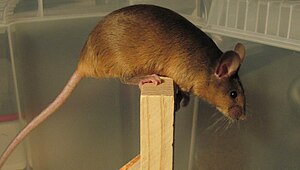Education
Education matters.
Background
I actually have a bit of training in creative writing, and I like to call upon it as I write, in particular when I write longer pieces.
My two sources of creative writing education were my 12th grade AP English teacher, Kitty Lindsay and the poet George Starbuck, who I studied under while I was a student at

Myles Standish Hall at Boston University in Boston, MA (Photo credit: Wikipedia)
Boston University. My undergraduate degree is in Philosophy. I did not take more than the one creative writing class although I do wish I had.
But let’s get down to brass tacks, shall we?
I’ll start with Kitty’s biggest and best mantra for writing, which was, simply, characters-conflict-crisis-change.
What does it all mean?
Characters
I don’t think you’ll find anyone who disputes the need for good, solid, memorable characters. However, there are those who would rather see (mainly) Star Trek canon characters in fanfiction stories. I disagree but do not begrudge these people their opinions.
Don’t get me wrong. I like the canon characters in pretty much all of the series (I am even okay with Wesley). But this does not mean that other characters and other situations don’t appeal.
For example, the Reversal storyline hinges, to a large extent, upon the fact that Lili and Doug are pretty much down to their last chances. I needed for Lili to be an original character, as there was no one else aboard the NX-01 who would have fit the bill. The character had to be human (so T’Pol was out), had to be older (so Hoshi was out) and had to be someone who would normally be underestimated (so Erika Hernandez and Amanda Cole were out).
Making People
Character creation is an ongoing process. Generally, for me, a character springs up but then changes as more back story is added. Shelby Pike, for example, arose as a former ballerina but she didn’t originally have some issues with confidence. Declan Reed wasn’t originally an artist. And Aidan MacKenzie was originally just a pretty face. He didn’t get any depth until later.

Travis Mayweather (Photo credit: Wikipedia)
For canon characters, I don’t change anything that’s already been defined. Hence Captain Archer is still Scott Bakula, Charles Tucker still has a Florida accent and Travis Mayweather remains a space boomer. But there are all sorts of other things that I was able to add and define and then refine.
For example, as I write Malcolm Reed, he has a knack for giving exceptionally good presents, for children and adults. The Travis I write is not interested in parenthood, although his Mirror Universe counterpart is. The Phlox that I write tells bad jokes that often backfire.
Without characters, stories aren’t worth reading.
Conflict
For longer works, conflict is key (for very short slices of life, a writer can skip this). Otherwise, stories meander and seem to have little point. In Reversal, the conflict between the Enterprise (in our universe) and the Defiant (in the Mirror) with the Calafans is a big driver of the piece. Without these conflicts, the story is mainly a bunch of dreams, and so is (I hope) interesting but, ultimately, somewhat soulless.
Crisis
Also known as climax, this is what the story is moving toward. In Reversal, I actually played on the synonym and then that led me (because my mind is in the gutter) to the idea of physical climax. And so I decided that, instead of one large climax (which would be male), I would go with a number of small climaxes, which is more female in nature. The smaller climaxes included the rescue, the movement of personnel off the Defiant and the aftermath of getting to the Enterprise.
Change
Characters and situations that do not change a unsatisfactory. They leave a reader, when a work is finished, with a feeling of “what was the point of all that?” I agree – and I despise when that happens. In Reversal, Lili ends up with a boatload of changes, but one of the biggest ones is that she begins the story essentially alone in the dark and ends it, again in the dark or at least semi-darkness, but she is no longer alone.
Edit It. Cut that story until it bleeds!
That is the other education mantra that Kitty had for me (and my fellow classmates). What it means, simply, is – don’t waste the readers’ time and good faith.
I have seen plenty of stories out there that seem to have extra stuffing in them. And one of the issues with Reversal is that, toward the end, I had some trouble letting it go. It wasn’t until I began to seriously think of a sequel that I was able to finally wrap things up. But if I were writing the story today, I would likely trim some of the chapters. As it is, between its initial posting on Trek United, then its addition to Issuu and then to its archiving on Ad Astra, the story has undergone some changes. Most are fairly cosmetic in nature. But I have attempted to tighten up the prose, which I feel makes for a better story.
Whimsy
Professor Starbuck was a different teacher and so he had different ideas of what made for good creative writing education. I well recall a number of exercises – one was to write about a far older relative and then to write about that person as a fourteen-year-old. Plus we wrote quite a bit of poetry.
One of the main things I learned from him was an appreciation for whimsy. There are plenty of ways to not take things quite so seriously, even when they are incredibly serious.
In the Times of the HG Wells series, I made it a point to give the time ships silly names. They are all named after something to do with time travel pop culture, such as the Flux Capacitor and the Audrey Niffenegger (she wrote The Time Traveler’s Wife). There is even whimsy on top of whimsy, as there is one outlier. One of the time ships is a successor vessel to the original Audrey Niffenegger. Its name is simply Audrey II, after the man-eating plant in Little Shop of Horrors.
Sports are another occasion for whimsy. A MACO is named Rex Ryan, after the current coach of the New York Jets. Gina Nolan‘s maiden name is Righetti, and she confirms to Kittris (who was named after Kitty Lindsay) that she is a descendant of 1981 American League Rookie of the Year Dave Righetti. Baseball player Ty Janeway has a fairly obvious origin, as do Mirror Universe baseball announcers Ted Trinneer and Jeff Blalock. Mirror Universe baseball is one big joke, with twelve team members instead of nine, twin pitchers and catchers and four bases. Even in a highly charged romantic moment, Doug dons one of Lili’s baseball caps and says, “Hey, I could play fourth base.”
Word Choice
Another thing I learned from George was the importance of word choice. For the story Paving Stones Made From Good Intentions, the title was changed twice. And it really was about education! It evolved as follows:
- The first title was Paving Stones Made of Bad Intentions, as it is a Mirror Universe story. However, I didn’t like the idea of going with a straightforward opposite. Instead, I wanted for it to be a lot clearer that the centerpiece scene was an act of love. But it would be somewhat misguided love.
- The second iteration was Paving Stones Made of Good Intentions. This corrected the idiom and better evoked the undercurrent of it being the road to hell. But I didn’t love how it flowed.
- So the final title was Paving Stones Made From Good Intentions. This title brings together not only the fact that the centerpiece scene is happening because people mean well but also because this is the road to hell. Furthermore, I wanted the title to effectively denote that the road to hell is actually deliberately and actively fashioned from these good intentions. This is rather than somewhat more passively being made of them. A subtle difference, to be sure, but the idea was that the intentions are in a somewhat more refined form. It is – there are good intentions but they are perverted and shaped into the paving stones, as opposed to just laid down in the roadbed.
Upshot
When stories appear to be winding around a bit too much, or seem to be getting too wordy, I try to remember my education. I hope I’m doing my two teachers proud.
Thanks, Kitty and George.
Like this:
Like Loading...














.jpg?resize=241%2C194)





